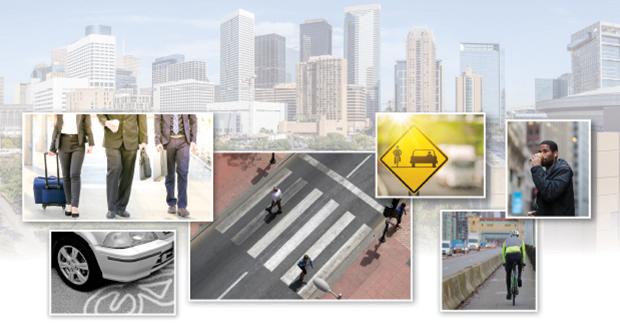A sharp increase in the number of pedestrian fatalities in Texas has prompted researchers with the Center for Transportation Safety at the Texas A&M Transportation Institute (TTI) to examine what factors contributed to the 550 deaths in 2015 — nearly a 13 percent increase from the year before. In fact, since 2010, pedestrian fatalities have risen an alarming 54 percent, representing 17 percent of all roadway deaths. That’s up from 13 percent of all fatalities in 2010.
“This is certainly an issue that has safety experts concerned,” says TTI Associate Transportation Researcher Stephanie Quinn. “But at this point we can only speculate about the cause of this dramatic increase. Are there simply more people walking? Have infrastructure changes contributed to the problem? Or is there a common human behavior, such as distraction for example, playing a role?”

Quinn and TTI Assistant Transportation Researcher Neal Johnson are co-leading a one-year Texas Department of Transportation research project. They will examine both pedestrian and bicycle crash data to determine where and on what types of roads the crashes occurred, and what caused them.
“We’ll also be conducting observational surveys in high-crash areas in Harris County, which is leading the state in the number of fatalities,” Johnson explains. Though only representative of 17 percent of the state’s population, he says, Harris County has been home to one-third of all pedestrian/bicycle crashes in Texas over the last five years. “We’ll be observing behaviors of drivers, riders and pedestrians in these areas to see if there’s anything we can pinpoint that might be contributing.”
Researchers will document where the pedestrians and bicyclists are walking or riding, the proper or improper use of crosswalks, bicyclist helmet use, and actions of surrounding motorists. The surveyors will also take note of the surrounding pedestrian and bicycle infrastructure (such as bike lanes and sidewalks) to see how it might affect behavior.
“Following the data collection stage, we will create a public outreach and educational campaign that uses the crash and behavioral data to educate and motivate safe behaviors among pedestrians, bicyclists and motorists,” Johnson says.
The researchers plan to highlight their results through social media outlets and public events such as fun runs and cycling events. Additionally, interactive seminars will be conducted to educate local residents on safe behaviors to help reduce these types of crashes.
“We’re approaching this project with no preconceived notions about what we might find,” Quinn says. “But we all agree it’s essential we find ways to end these deaths.”
